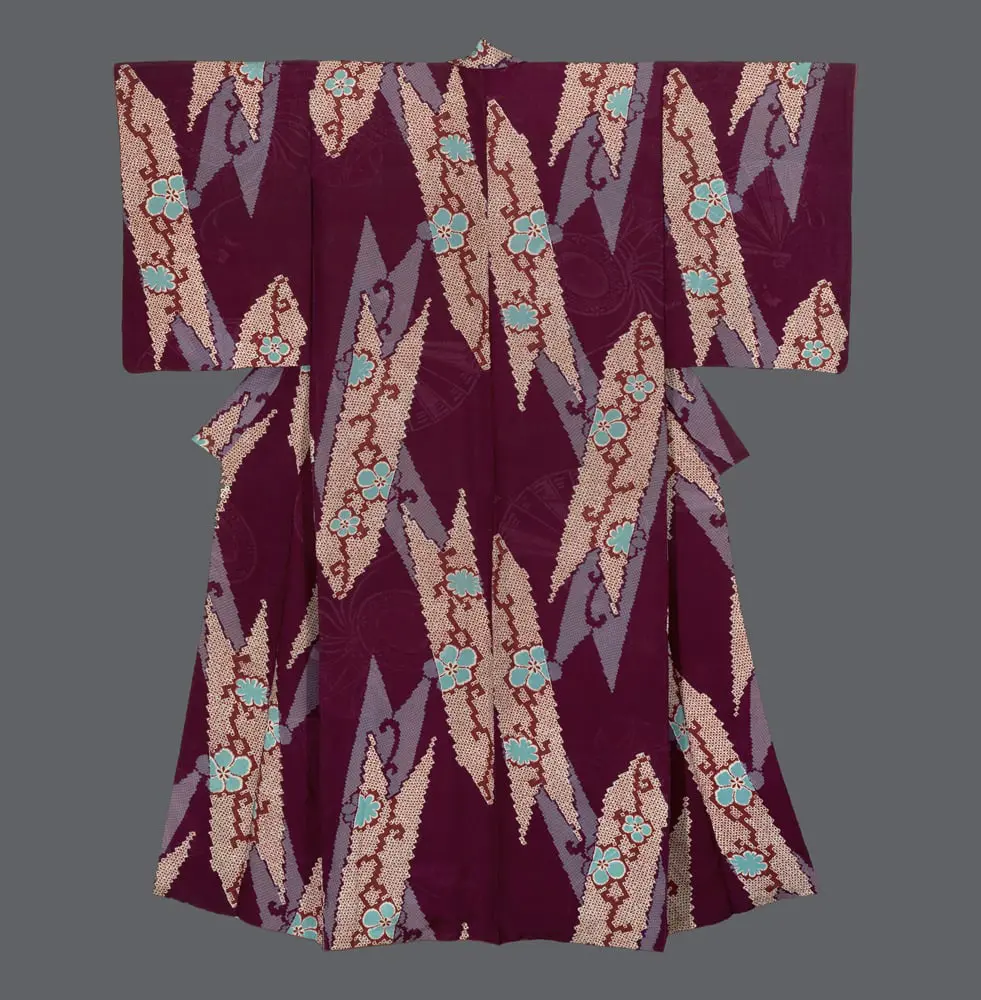This elegant rinzu chirimen silk kimono features a striking diagonal lattice pattern of yabane (arrow feathers) rendered in multiple colorways and techniques against a rich burgundy ground, creating a dynamic visual rhythm that speaks to both classical Japanese design principles and the bold graphic sensibilities emerging in the early 20th century. The composition demonstrates clear influences from Art Deco's geometric patterning while maintaining the organic flow characteristic of traditional Japanese textile design.
The technical execution reveals remarkable craftsmanship in its layered approach to surface decoration, combining authentic shibori tie-dye techniques with faux-shibori printing methods to create textural variety and visual depth. The true shibori elements, evident in the red and white arrow feathers, display the characteristic organic irregularity and subtle gradations that can only be achieved through hand-tied resist dyeing, while the faux-shibori pink and blue feathers demonstrate the period's embrace of mechanical reproduction techniques that could mimic traditional effects at scale. This juxtaposition reflects the broader cultural dialogue between handcraft traditions and industrial innovation that characterized Japanese textile production during this transformative period.
Symbolically, the yabane motif carries profound cultural significance as a protective talisman, traditionally associated with warding off evil and ensuring safe passage through life's challenges. The arrow feather pattern was particularly favored for formal wear and special occasions, as arrows were believed to fly straight and true, never returning once released—making them powerful symbols of forward progress and determination. The scattered placement of delicate blue floral elements throughout the composition adds seasonal reference and softens the geometric severity of the arrow pattern, creating a harmonious balance between strength and grace that would have been especially appropriate for a woman of refinement navigating the changing social landscape of early 20th-century Japan.
It measures 50 inches (126 cm) from sleeve-end to sleeve-end and stands at 59 inches (149 cm) in height.
This artwork is featured on page 272 of Art Kimono: Aesthetic Revelations of Japan, 1905-1960. This book, published by Yorke Antique Textiles, can be previewed or purchased on our website here.
.avif)








